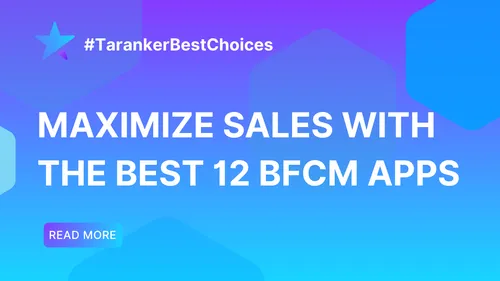Introduction
Setting up accurate and efficient shipping rates and zones is a critical aspect of managing a successful Shopify store. While your marketing efforts attract customers and your products create interest, your shipping strategy is what completes the sale.
Improperly configured shipping rates and zones can result in cart abandonment, unsatisfied customers, and lost revenue. On the other hand, providing transparent, accurate shipping costs tailored to different geographic areas can boost conversions, increase customer satisfaction, and simplify your fulfillment process.
In this guide, we’ll cover:
✔ Understanding shipping rates and zones on Shopify
✔ How to configure them effectively
✔ Strategies to optimize for cost-efficiency and customer satisfaction
✔ Best practices for managing multiple shipping regions
✔ Common pitfalls to avoid
Let’s ensure your Shopify store’s shipping settings are working for you—not against you.
1. Understanding Shipping Rates and Zones on Shopify

a) What Are Shipping Rates?
Shipping rates are the fees customers pay for the delivery of their orders. They can vary based on:
✔ Weight of the package
✔ Order value
✔ Destination
✔ Shipping speed
Shipping rates can be configured in various ways, including:
-
Flat Rate Shipping: A fixed price for all orders, regardless of size or weight.
-
Weight-Based Shipping: Rates calculated based on the total weight of the order.
-
Price-Based Shipping: Rates determined by the total cart value.
-
Carrier-Calculated Shipping: Rates provided in real-time by carriers like UPS, USPS, DHL, or FedEx.
b) What Are Shipping Zones?
Shipping zones are geographical regions that you define to apply specific shipping rates. Shopify allows you to create customized shipping zones so you can charge different rates for different areas.
For example, you may want to offer:
✔ Free shipping within your home country
✔ Flat-rate shipping to specific countries
✔ Premium shipping options for expedited delivery
📌 Pro Tip: Setting up accurate shipping zones is crucial if you sell internationally. A well-configured shipping zone setup ensures customers receive precise rates and avoids abandoned carts due to unexpected charges.
2. Setting Up Shipping Rates and Zones on Shopify

a) Accessing Shipping Settings
To begin configuring your shipping rates and zones, go to:
-
Shopify Admin Dashboard → Settings → Shipping and delivery
-
Click Manage rates next to your shipping profile.
-
Define your Shipping Zones by adding countries or regions.
-
Create shipping rates for each zone by clicking Add rate.
📌 Tip: If you have multiple locations fulfilling orders, make sure to set up shipping rates for each location.
b) Configuring Shipping Rates
There are several strategies to consider when setting up your shipping rates:
Flat Rate Shipping
✔ Useful for stores with a consistent product size and weight.
✔ Simple and straightforward for customers.
📌 Example: Charge $5 for all domestic orders and $15 for all international orders.
Weight-Based Shipping
✔ Ideal for merchants selling items with varying sizes and weights.
✔ Provides more precise shipping charges, enhancing customer trust.
📌 Example:
-
0-1kg = $5 shipping fee
-
1.1kg-5kg = $10 shipping fee
-
5.1kg and above = $20 shipping fee
Price-Based Shipping
✔ Helps incentivize higher order values.
✔ Often paired with free shipping promotions.
📌 Example:
-
Orders under $50 = $5 shipping fee
-
Orders $50-$100 = Free shipping
-
Orders above $100 = Free expedited shipping
Carrier-Calculated Shipping
✔ Provides real-time rates from carriers like USPS, UPS, DHL, and FedEx.
✔ Best for merchants dealing with varying weights, sizes, and destinations.
📌 Tip: Shopify’s Advanced plan or higher is required for carrier-calculated shipping unless you pay for an annual plan.
3. Strategies for Optimizing Shipping Rates and Zones

a) Offer Free Shipping Above a Certain Threshold
Encourage customers to spend more by offering free shipping for orders over a specific amount.
✔ Boosts Average Order Value (AOV)
✔ Creates a sense of value and exclusivity
📌 Example: “Free shipping on all orders over $75!”
b) Create Location-Based Shipping Zones
Break your shipping areas into zones such as:
✔ Domestic (Country-specific zones like the US, Canada, UK)
✔ International (Regions like Europe, Asia, Oceania)
Each zone can have its own tailored rates, ensuring you remain competitive in various markets.
📌 Pro Tip: Use third-party apps like EasyShip or ShipStation if you need more complex zone management.
c) Display Estimated Delivery Times
Letting customers know how long shipping will take improves the customer experience and reduces abandoned carts.
✔ Specify estimated delivery dates at checkout
✔ Use tools like AfterShip for tracking updates
📌 Example: “Standard Shipping (5-7 business days) - $4.99”
d) Regularly Review and Update Your Rates
Shipping costs change. Suppliers, carriers, and even seasonal factors can affect rates.
✔ Audit your shipping setup every 3–6 months.
✔ Monitor your analytics to spot high abandonment rates linked to shipping costs.
📌 Pro Tip: Run A/B tests to find the optimal shipping rates for your audience.
4. Common Pitfalls to Avoid
✔ Neglecting International Customers: Ensure you provide transparent, accurate rates for global buyers.
✔ Using Excessive Shipping Apps: Stick to one reliable app for your shipping needs to avoid compatibility issues.
✔ Failing to Communicate Clearly: Ensure shipping costs are displayed prominently before checkout to avoid cart abandonment.
5. Conclusion
Setting up shipping rates and zones on Shopify may seem daunting, but it’s a critical component of your store’s success. By configuring your shipping profiles correctly, regularly reviewing them, and implementing customer-friendly strategies, you can enhance user experience, reduce cart abandonment, and ultimately increase sales.
💡 Action Step: Take some time to audit your current shipping settings and make adjustments based on your unique business model. Experiment with various strategies to see what works best for your audience.













